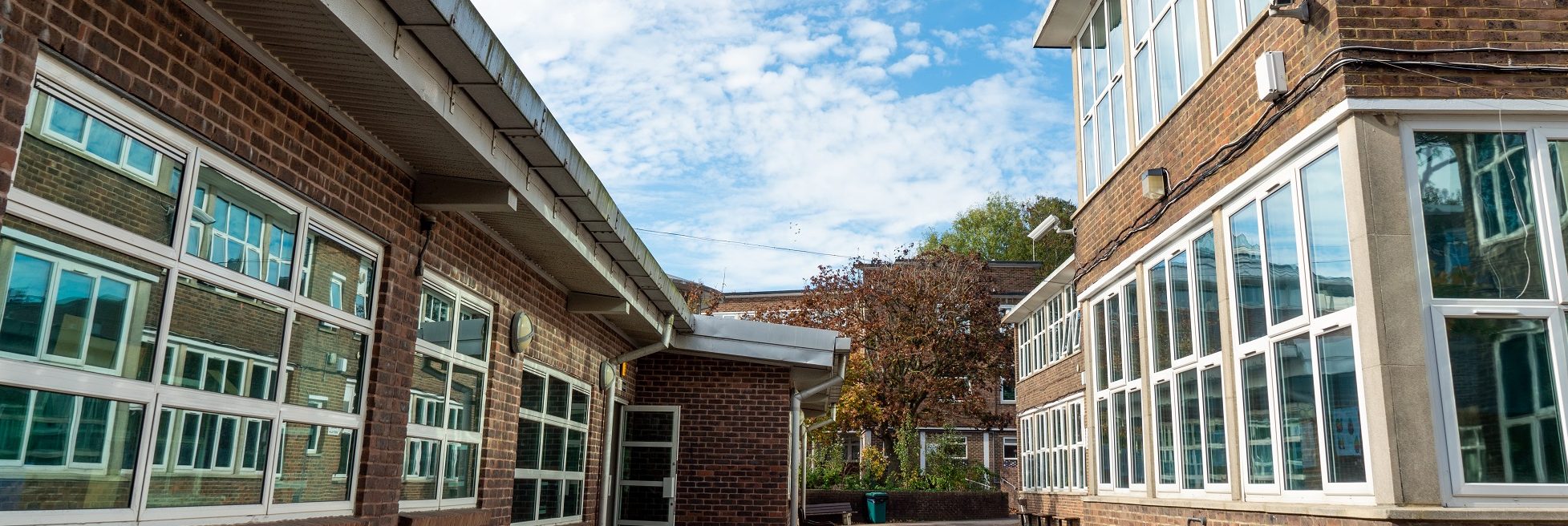A strategic approach to modernising school and college buildings:
Zenergi’s guide to maximising energy and carbon savings
The stringent eligibility criteria for Phase 2 of the Public Sector Decarbonisation Scheme, not to mention the overall reduction in the total grant funding available, resulted in many schools and colleges being unable to take advantage of the scheme.
But we wanted to reassure customers that all is not lost. In fact, far from it.
The scheme was primarily focused on providing funding for replacement boilers, upgrading single glazing to double glazing and other building fabric improvements. For many organisations, a strategic step-by-step plan will identify a number of energy saving measures that would logically be taken before any large scale replacement of a boiler to a ground or air source heat pump, in order to maximise the energy savings and the return on investment. Equally, while replacement of single glazing to double glazing may seem like a quick win, the return on investment would be measured in decades, whilst other energy saving opportunities will offer a faster return on investment for a lower outlay.
What are the opportunities?
Many schools and colleges that would have applied for funding were originally constructed in the 1950s when energy use was not a major consideration and this legacy affects the ultimate future energy performance of buildings. Our technical division, Briar, has undertaken a number of energy audits and surveys at buildings like these throughout the UK and we are sharing some insights from our work.
Lighting
Lighting typically accounts for around half of a school or college’s electricity use, offering a significant opportunity for savings. Upgrading fluorescent lighting to modern LED technology can offer savings of between 40% and 50%, with a typical payback period of eight years. Lighting upgrades can also offer aesthetic improvements along with reduced maintenance costs since LED lighting is typically rated for 50,000 hours, whereas fluorescent lighting is rated for just 10,000 – 15,000 hours.
Match heating times to building occupancy
A quick win for schools and colleges is to ensure that heating time is aligned to occupation time. Reducing the heating time by even half an hour can have a significant impact on energy consumption and we generally recommend that schools and colleges switch off their heating before the end of the learning day, since the building will retain heat and it will avoid heating beyond building occupancy. But it is also advisable to turn the heating on before the start of the day to warm up the fabric of the building, since how warm we feel is down to about one third the air temperature that is around us and about two thirds due to the surrounding surface temperature (radiant temperature from walls, floor, ceiling etc). Typically, a 1 degree reduction in temperature can achieve an 8% heating saving, so we would always recommend consideration to heating in different areas of the building.
BMS optimisation
Building Management Systems (BMS) can help to ensure that heating time matches your building occupancy, as well as offering the opportunity to optimise your hot water and ventilation too. A common challenge we see, particularly where controls are manual, is that schools and colleges will make changes to their settings for summer and half term holidays but fail to do the same for public holidays, weekends and overnight. A BMS will overcome those issues to deliver immediate savings. We’ve seen schools reduce gas consumption by as much as 25% through simple control system changes, such as ensuring the plant is not operating when the school is not in use, and that settings match the school’s requirements. The payback period of optimising existing systems can be within a year, and within 10 years when replacing legacy controls with modern technology.
Behavioural change
Energy awareness training to improve staff knowledge of the operation of services can be very beneficial. We would recommend that this takes place annually, as we often see this activity becomes a short-term focus, instead of becoming truly entrenched within the organisation to really deliver value. Today, IT accounts for a considerable proportion of energy use in schools and colleges, but savings can be made by ensuring that technology is switched off and not left on standby, which can be more easily achieved when using central power adaptors that can shut multiple devices down with one switch. Encouraging staff to close doors and windows and not heating excessively can offer savings of 5-10%. The growth in school eco-councils can help schools engage both pupils and staff in energy saving. Simple visual reminders and posters can make turning lights off in vacant rooms become standard procedure.
Alternative funding routes
Funding schemes that have previously been administered by Salix – Salix Energy Efficient Loan Scheme (SEELS); Salix Energy Efficiency Fund (SEEF); and Switching to Low Energy (SLE) – have all closed as of 1 April 2021. It is likely that funding will be made available in future rounds of PSDS to replace these traditional funding routes and we will provide updates on our website if and when they become available.
Condition Improvement Fund (CIF)
The Condition Improvement Fund (CIF) provides funding to academies, sixth-form colleges and non-diocesan VA schools via an annual bidding round. Successful bidders receive a non-repayable grant to allow them to address significant areas of poor building condition. The fund also supports a small proportion of building expansion projects to academies, sixth-form colleges and non-diocesan schools with an Ofsted rating of ‘good’ or ‘outstanding’ that demonstrate a need to expand. The next round will open in November 2021, so it is worth preparing now.
Meanwhile, Zenergi’s Energy Freedom team offer another funding route that enables schools and colleges to access an extensive range of technologies to achieve both energy and carbon savings objectives in a cash-positive way. Funding routes include asset funding; corporate Power Purchase Agreements (PPAs); engaging an Energy Service Company (ESCO); or community funding. Interest free credit and deferred payments are also an option for simple technologies with a fast return on investment, and clients can also invest their own capital expenditure into projects, or invest a percentage of the overall cost in a mix and match scenario. Since terms vary on all the different funding options, we can advise on the best funding routes to support an organisation’s budget and business drivers, and take care of the application for a streamlined end-to-end project-managed approach to your energy saving initiatives. We can also partner organisations with cash-rich businesses interested in investing in renewable generation projects.
For some useful tips to avoid common energy wastage in school and college buildings, listen to our podcast. If you would like to talk to us about energy surveys and audits, please get in touch.








